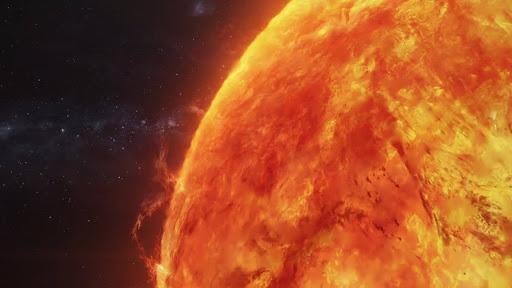
‘Peacock Jets’ on Sun Linked to Magnetic Flux Cancellation
The Sun, the star at the center of our solar system, is a fascinating and dynamic celestial body. Its surface is constantly in motion, with hot plasma and magnetic fields interacting in complex ways. A recent study has shed new light on a fascinating phenomenon observed on the Sun, known as “peacock jets.” These recurring fan-shaped eruptions in the Sun’s lower atmosphere have been a subject of interest for scientists, and new research has revealed the underlying mechanism that drives them.
What are Peacock Jets?
Peacock jets are a type of solar jet that appears as a fan-shaped structure, with the base of the jet anchored to the Sun’s surface. They are typically observed in the lower atmosphere of the Sun, where the temperature is around 10,000 Kelvin (18,000°F). These jets are characterized by their bright, compact shape and their ability to release a significant amount of energy.
The study, published by researchers at the Indian Institute of Science Education and Research (IISER) and the Indian Institute of Astrophysics (IIA), used a combination of observations and simulations to investigate the origins of peacock jets. The team analyzed data from the Solar Dynamics Observatory (SDO) and the Atmospheric Imaging Assembly (AIA) to study the behavior of these jets.
Magnetic Flux Cancellation: The Key to Peacock Jets
One of the key findings of the study is that peacock jets are powered by magnetic flux cancellation. Magnetic flux cancellation occurs when two opposing magnetic fields meet and cancel each other out. This process releases a significant amount of energy, which is then converted into heat and light.
The researchers used simulations to model the behavior of magnetic flux cancellation in the Sun’s lower atmosphere. They found that when two magnetic fields with opposite polarity meet, they create a current sheet that acts as a catalyst for the cancellation process. This current sheet amplifies the magnetic field strength, leading to the release of energy in the form of a peacock jet.
The study revealed that peacock jets are not a single event, but rather a recurring phenomenon that occurs due to the constant cancellation of magnetic fields in the Sun’s lower atmosphere. The researchers observed that the jets occur in a specific region of the Sun’s surface, where the magnetic fields are strong and complex.
Why is this Research Important?
Understanding the mechanism behind peacock jets is crucial for predicting space weather and safeguarding our technology. Space weather refers to the dynamic and variable conditions on the Sun and in the solar wind that can affect Earth’s magnetic field and atmosphere.
Peacock jets are a type of solar eruption that can release significant amounts of energy into space. These events can cause geomagnetic storms, which can disrupt satellite communications and navigation systems. By understanding the underlying mechanism of peacock jets, scientists can better predict when and where these events will occur, allowing them to take necessary precautions to protect our technology.
Conclusion
The discovery of peacock jets and their link to magnetic flux cancellation is a significant breakthrough in our understanding of solar dynamics. This research highlights the importance of continued study of the Sun and its complex magnetic fields. By deciphering the secrets of the Sun’s behavior, scientists can better predict and prepare for space weather events, ensuring the safety of our technology and our reliance on it.
As we continue to explore the mysteries of the Sun, we are reminded of the importance of interdisciplinary research and collaboration. The study of peacock jets is a prime example of how scientists from different fields can come together to advance our knowledge and understanding of the universe.
Sources:






